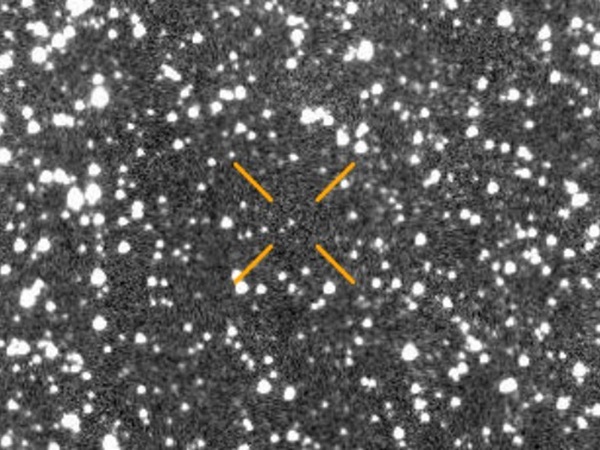BALTIMORE, MD—A newly discovered interstellar comet, named 3I/ATLAS, is speeding through our solar system, marking only the third such object ever observed, NASA has announced. Detected on July 1, 2025, by the NASA-funded Asteroid Terrestrial-impact Last Alert System (ATLAS) telescope in Chile, the comet is drawing intense interest from astronomers—and some controversial speculation about its nature.
The comet, originating from beyond our solar system, is currently about 420 million miles from Earth, arriving from the direction of the constellation Sagittarius. It is traveling at approximately 130,000 miles per hour relative to the Sun and will make its closest approach to the star on Oct. 30, at about 130 million miles, just inside the orbit of Mars. Thus far, NASA says 3I/ATLAS poses no threat to Earth, maintaining a minimum distance of 150 million miles, with its closest approach to our planet expected in December.
Follow-up observations from telescopes worldwide, including the Zwicky Transient Facility at Palomar Observatory in California, have confirmed signs of cometary activity, such as a marginal coma and short tail, leading to its official designation as C/2025 N1 (ATLAS). The comet’s brightness suggests it could be up to 7 miles wide, potentially making it the largest interstellar object observed to date, though its exact size remains under investigation.
“This is a rare opportunity to study an object from another star system,” said Paul Chodas, director of NASA’s Center for Near Earth Object Studies. “These visitors carry clues about the formation of planetary systems across the galaxy, and 3I/ATLAS is no exception.”
The comet’s discovery follows two previous interstellar visitors: ‘Oumuamua in 2017 and 2I/Borisov in 2019. Unlike ‘Oumuamua, which initially appeared asteroidal but sparked debate about its origins, 3I/ATLAS shows clear cometary traits, with a bright cloud of gas and dust surrounding its icy nucleus. Astronomers expect it to remain visible to ground-based telescopes through September, after which it will pass too close to the Sun for observation.
However, the comet has ignited controversy beyond its scientific significance. Harvard astrophysicist Avi Loeb, known for suggesting ‘Oumuamua might be an alien probe, has proposed that 3I/ATLAS could be an extraterrestrial craft. Loeb points to its unusual trajectory, which will take it near Venus, Mars, and Jupiter, as evidence of possible “intelligent” direction. “We should put all possibilities on the table,” Loeb said, advocating for a risk assessment scale akin to the Richter scale for earthquakes, ranging from natural objects to potentially technological ones.
Loeb explained that 3I/ATLAS’s course is so rare the chance of a natural space rock randomly flying along that path is less than 0.005 percent.
NASA and other experts dismiss such claims, emphasizing the comet’s natural characteristics. “It’s not artificial, don’t get excited,” Chodas said. “It’s a natural visitor from another stellar neighborhood, likely traveling for hundreds of millions, if not billions, of years.”
Astronomers are racing to study 3I/ATLAS before it exits the solar system. The Vera C. Rubin Observatory in Chile, set to begin full-sky scans soon, may help detect more such objects, offering insights into their frequency and origins. For now, 3I/ATLAS remains a fleeting cosmic guest, captivating scientists and fueling debate as it streaks through our celestial backyard.
More in the video below.


